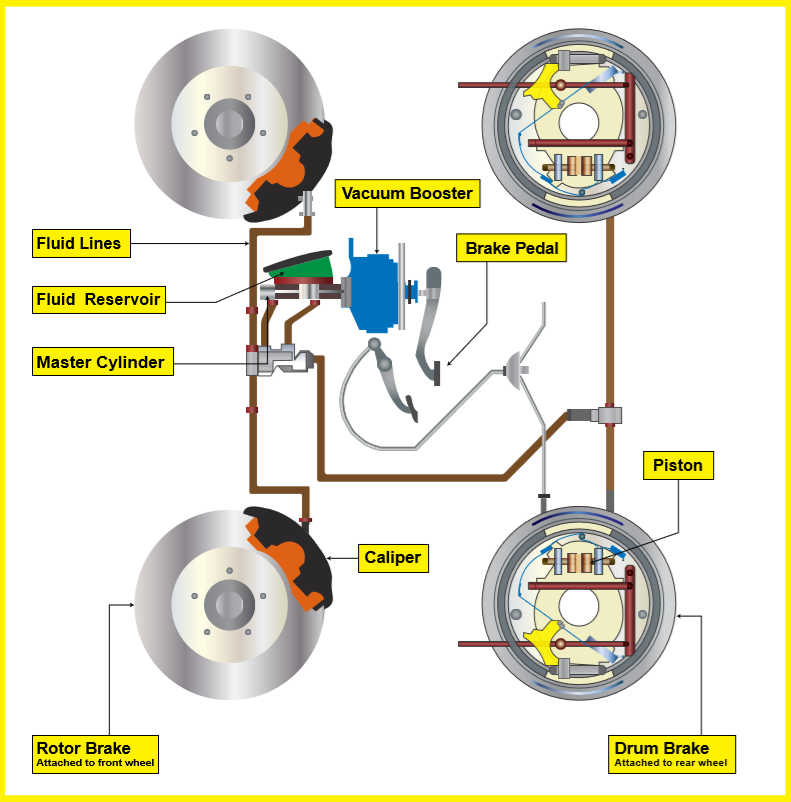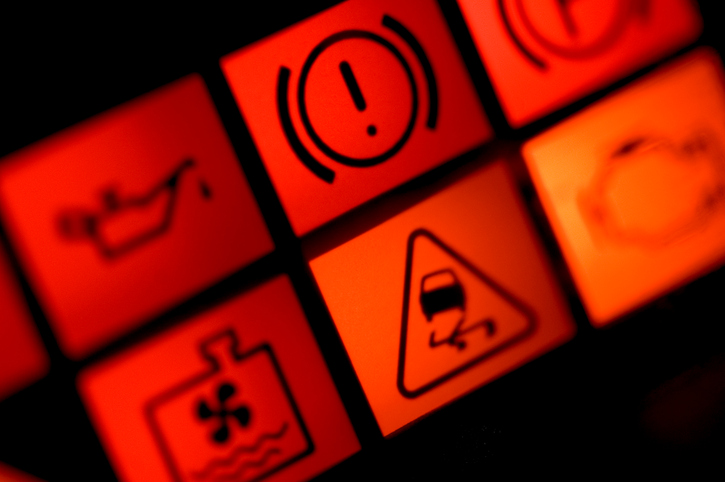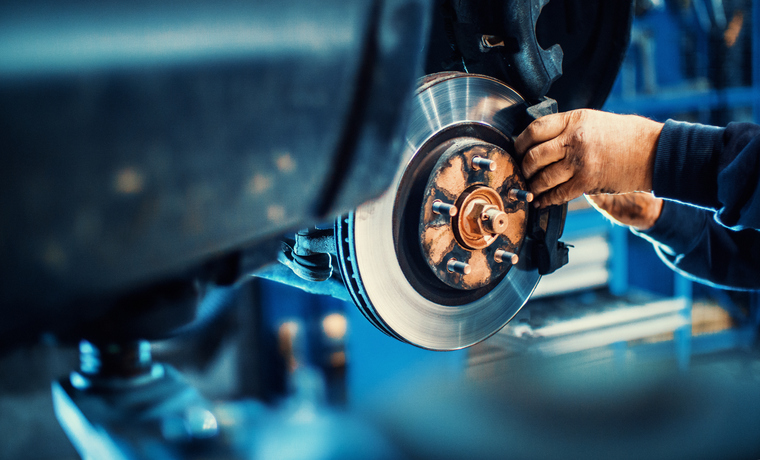Do you know the early signs of brake problems? If you’ve noticed a weird noise or change in what happens when you brake, you might be worried about the cause. While brake problems are rare, faults can develop if you don’t have your car serviced regularly enough – putting its safety and performance at risk.
To help you spot the signs and catch issues early, we’ve put together a guide on the signs and symptoms of brake problems, so that you know when to get a professional to take a look.
We’ll answer these two important questions:
How Does a Car Brake System Work?
Before we dive into the signs and symptoms of brake problems, here’s an overview of how brakes work. This will give you an understanding of where and why problems can happen, and could help you to diagnose brake trouble yourself.
- When you apply the brakes, a force is applied to the vacuum booster, which sits directly behind the brake pedal. This chamber boosts the braking force, helping the car to slow down.
- The force from the vacuum booster is transferred to the master cylinder, which moves against a spring, allowing brake fluid to flow under pressure into the fluid lines.
- Through the hydraulic brake fluid, the pressure from the vacuum cylinder reaches the callipers (disc brakes) and cylinders (drum brake).
- On a disc brake, pressure from the fluid causes the brake pads inside the calliper to move, pressing against the revolving rotor to slow the wheel or bring it to a stop.
- On a drum brake, it’s slightly different. The pressurised fluid enters the cylinder and forces the piston inside to move outwards, forcing the brake shoes into the rotating drum to slow the car.
How Do I Know If There’s a Problem with My Car’s Brakes?
Now that you know how car brakes work, it’s time to take a look at some of the problems which can crop up in the braking system, so you can spot the signs and take action before the problem gets any worse
1. Brake Light Alert on the Dashboard
The most obvious sign of brake trouble is a warning light on the dashboard, which you should never ignore. The brake system has two warning lights, including the handbrake light (red) and ABS light (orange), and either one of these (or both at the same time) could be a sign that there’s a brake issue.
When you see a brake warning light, check that the handbrake is definitely off and that the tyres aren’t skidding. If this isn’t the case, you should pull over immediately and call for assistance.
2. Grinding Sound Under Braking
Do the brakes make a grinding sound and can you feel it in the pedal? This could be something simple and easily fixable, like a loose stone caught in the calliper, or something more serious, such as worn brake pads or a build-up of rust around the brake shoes or drum surface of rear drum brakes.
In either case, it’s better if you take the car to a mechanic, who will be able to diagnose the problem more easily and get it fixed for you straight away.
3. Squealing Noise When Braking
Both front disc brakes and rear drum brakes feature a pad wear indicator, which is designed to let you know when the calliper pads or brake shoes need changing. How does it do this? By letting out a horrendous metallic squeal when you hit the brakes.
Ideally, you should get the pads changed every time the car is serviced. The pad wear indicator shouldn’t really be relied on to tell you when to change the pads, as driving with them down low could cause damage to the callipers and cylinders – which is a much more expensive fix.
4. Vibration or Wobbling Feel
One of the most common brake problems is vibration in the steering wheel or a wobbling sensation when you apply the brake pedal. This happens when the brake rotor comes out of alignment with the wheel itself, causing the wheels to track ‘untrue’ with the road. It can also be a sign that the callipers in the front brakes aren’t detaching themselves properly from the rotor when you lift your foot off the pedal, due to rust or a build-up of debris.
While brake vibration shouldn’t affect the system’s efficiency, it’s definitely something you should get fixed sooner rather than later. Vibrations could be a sign of a more serious underlying problem, and may cause premature wear of brake components, leading to higher repair costs.
5. Burning Smell
While burning smells usually mean an overheated engine, they can also indicate that the brake fluid in the callipers and cylinders has reached boiling point, particularly if you’ve just done a lot of hard braking while travelling down a steep hill. If it’s brake related, the burning smell will be sharp and chemically – that’s how you can differentiate it from the smokier smell from the engine.
Catch a whiff of boiling brake fluid, and you need to pull over ASAP. Brakes won’t work when the fluid is hot because they can no longer efficiently transform kinetic energy into heat energy through friction – so you need to find a safe place to get off the road when you smell burning brakes.
6. Spongy Brake Feel
Does the brake fluid feel spongy when you press it? Or maybe it goes all the way to the floor more easily than normal? If so, you could have a brake fluid leak. Because the brake system relies on pressurised hydraulic fluid, a leak is really bad news and will mean that the brakes don’t work as they should. If the pedal feels spongy, you need to get it looked at right away.
Common areas where brake fluid can leak in the system include around the master cylinder, brake lines (particularly where they bend) cylinders and callipers. Brake fluid leaks are much less common than coolant/antifreeze leaks because the lines are made from reinforced plastic or metal, but they can still happen. Get to the garage straightaway if you suspect a leak, or have someone come to you.
7. Pulling to One Side During Braking
Another common symptom of brake problems is the car lurching to one side when you brake. This usually tells you there’s a problem with either one of the front two brakes, such as a misaligned rotor or a fluid flow issue which is causing one side of the brakes to apply more strongly than the other.
Often, you may only notice this problem when braking hard, with the car behaving normally at lower speeds. It’s still a good idea to get it fixed, however, as brake pull could be enough to cause an accident. It can also lead to premature component damage, and may cause the brake pads to wear unevenly.
From coolant/antifreeze to brake fluid, our high-performance maintenance fluids are developed to work in extremes, so you can be confident they’ll work for your car. Find out more about Prestone Brake Fluid here.



